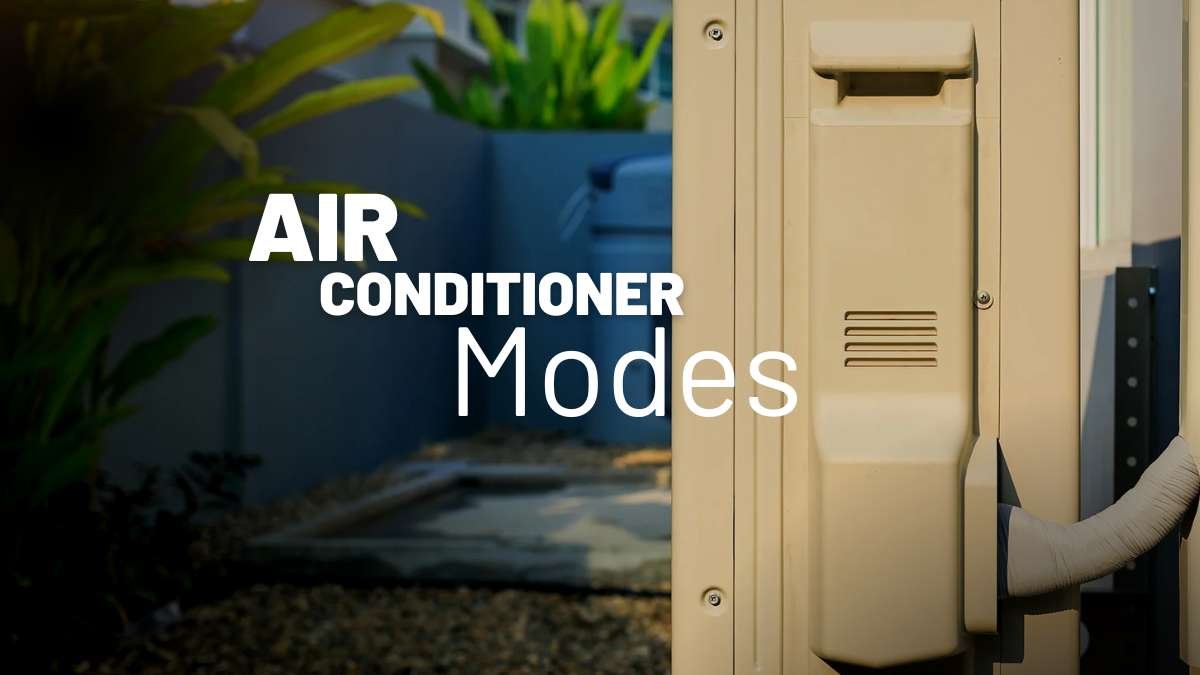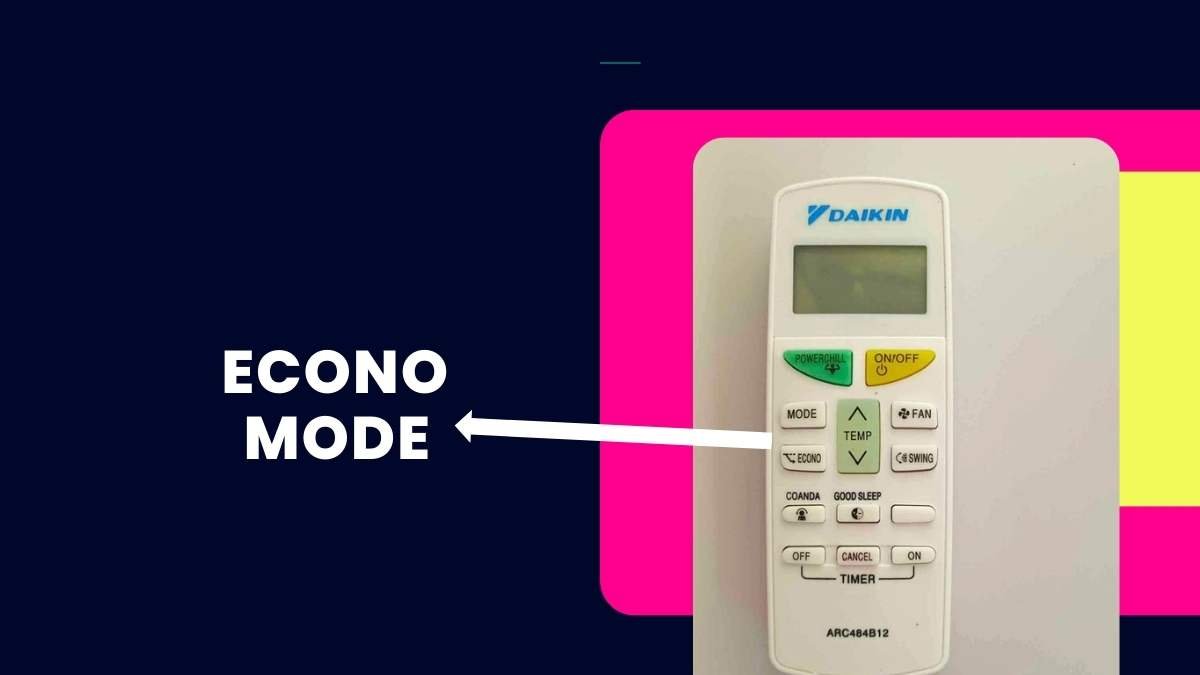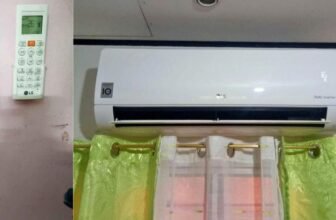
Split air conditioners have revolutionized cooling and comfort, becoming a staple in homes and offices. But did you know these appliances come loaded with multiple mode settings that serve distinct functions? Understanding the capabilities of cool, dry, fan, and specialized modes like sleep and energy saver allows you to optimize performance, electricity usage, and efficiency. Utilizing the different operations cleverly can help maximize comfort and lower your energy bills. In this post, I will share different types of modes found in split AC.
Here is the List of Common Modes found in Split ACs
Cool Mode
The cool mode is the primary function and most frequently used setting on a split AC. When you set your AC to cool mode, it lowers the ambient air temperature and reduces the humidity in the room by cooling and dehumidifying the indoor air. Most people use the cool mode during hot summer months as it provides effective cooling and comfort by creating a refreshing cold airflow.
The ideal temperature range for operating your split AC in cool mode is between 22 to 25 degrees Celsius.
This is the recommended temperature for residential and office spaces. Setting the thermostat below 22 degrees Celsius can sometimes lead to excessive cooling which is not healthy or comfortable for prolonged periods. It also results in higher electricity bills since the AC has to work harder to maintain lower temperatures.
Some split ACs have options like high cool and low cool which refer to the fan speed. High cool mode cools your room faster by operating the fan at higher rotational speeds. Low cool mode provides gentler cooling by using lower fan speeds. Those who prefer a mild cooling effect or want to reduce noise levels can use the low-cool option.

Using cool mode improves comfort on hot sweaty days and nights by removing both heat and moisture from the indoor air. It lowers the room temperature as well as the humidity levels which can otherwise feel stuffy and uncomfortable.
Cool mode brings down the thermal load and creates a pleasant interior environment. It can also help you sleep better at night when outdoor temperatures are high.
Dry Mode
Dry mode on split ACs lowers the humidity levels in the room without actually changing the ambient temperature. It removes moisture from the indoor air and maintains comfortable humidity inside enclosed spaces.
Dry mode basically dehumidifies the air by condensing and eliminating water vapor. This helps control humidity and prevents problems like stuffiness, stickiness, condensation, and mold growth.
Dry mode does not cool the air like the AC’s normal operation. It simply circulates the room air through the cooling coil to extract moisture without any temperature reduction. The coil surface temperature is regulated to wring out excess humidity from the passing air. This reconditioned dry air is then blown back into the room by the fan. No additional cooling takes place.
Split ACs with dry mode are ideal for use during monsoon season when humidity levels tend to shoot up due to heavy rains. High humidity can cause discomfort and wetness. Fungi and molds also thrive in damp conditions. Using dry mode helps counter these effects by acting as a dehumidifier. It improves indoor air quality and controls mustiness.
Dry mode may also be useful for drying out water-damaged buildings.
Some people use dry mode in split ACs even when it is not raining to maintain humidity within 40 to 50% levels.
This prevents dampness, condensation on walls, water dripping from windows and surfaces, microbial growth, stuffy smell, etc. However, over-drying the indoor air can be detrimental. Ideally, humidity levels between 30% to 60% are considered comfortable.
Fan Mode
Split ACs can be operated in fan mode to simply blow air and provide ventilation without actually cooling or heating the air. In this mode, only the fan inside the indoor unit runs and circulates the existing room air. No refrigeration or cooling coil is involved.

Fan mode is an energy-efficient setting that requires minimal electricity usage. It does not affect the air temperature but provides air movement for ventilation. Fan mode promotes air circulation and prevents pockets of hot stagnant air from forming inside enclosed spaces. It expels odors and disseminates fresh outdoor air indoors.
Some benefits of using fan mode include:
- Energy efficient and saves electricity since the compressor does not run. This helps lower your electricity bills.
- Cost-effective way to ventilate indoor spaces especially when the weather is mild.
- Provides air circulation and movement for comfort.
- Prevents stuffiness and dissipates foul odors indoors.
- Requires minimal maintenance since the AC does not have to work hard.
Fan mode can be your default go-to setting for air circulation and ventilation purposes during the pleasant pre-monsoon and post-monsoon seasons or on cool rainy days.
It is also suitable for cramped windowless rooms like basements and garages that need fresh flowing air.
Sleep Mode
Split ACs come equipped with an innovative sleep mode that optimizes the temperature and fan speed settings to provide customized cooling comfort through the night. Sleep mode takes into account the fact that human body temperatures dip at night when we are asleep. Hence, intensive cooling becomes unnecessary.

Sleep mode is designed to automatically adjust the AC operation to gently cool through different comfort levels as you sleep. During the initial period when you are still awake, higher cooling is provided. Then the temperature is gradually increased slightly, and the fan speed lowered incrementally over 6-8 hours. This prevents excessive cooling which can disturb your sleep.
The pre-programmed slight changes in cool air flow provided by sleep mode keep your environment optimized for sleeping without becoming too cold. Sleep mode promotes sound sleep and greater energy savings since intensive cooling all through the night is inefficient and wasteful. This mode provides personalized comfort tailored to your body’s cooling needs as you sleep.
Sleep mode is ideal for operation at night and provides multiple benefits:
- Encourages sounder and healthier sleep
- Prevents waking up due to feeling too cold
- Conserves electricity since continuous high cooling is avoided
- Lowers electricity bills by limiting power consumption at night
- Provides customized and optimized comfort for better quality sleep
- Adapts cooling effect based on sleep cycle requirements
- Maintains pleasant night-time temperatures for babies and elderly
Econo Mode
Econo mode found it Daikin AC’s, it minimizes power consumption by optimizing the operation of the air conditioner. It adjusts temperature, fan speed, and compressor operation to provide just the necessary amount of cooling while intelligently reducing electricity usage. Econo mode alters the cooling effect to conserve energy without compromising comfort.

When econo mode is activated in a Daikin AC, various internal settings are automatically adjusted to limit power use:
- The thermostat temperature setpoint is increased by 1-2 degrees. This reduces compressor operation.
- Cooling capacity is controlled through intermittent compressor cycling.
- Fan speeds are brought down to limit air circulation.
- Compressor motor operation regulated to conserve energy.
- Power input to the unit is managed holistically to cut consumption.
Using econo mode allows you to save considerable electricity and lower your energy bills since the AC does not operate at full blast. Limiting power consumption. Econo mode provides an energy-conserving and eco-friendly way to smartly manage your AC’s electricity intake.
During times when heavy AC usage is not required, such as when going out, econo mode can minimize wasteful cooling. It sustains basic comfort levels without the power drain of intense air conditioning. Econo mode also helps balance cooling needs and energy conservation requirements.
Turbo Mode
For urgent cooling, turbo mode in Voltas, Lloyd, and Blue Star ACs quickly lowers the room temperature by operating at the maximum fan speed and cooling capacity. Both the compressor and fan inside the indoor unit function at their highest potential to deliver rapid spot cooling.

Turbo mode creates an intense burst of chilled air by leveraging the AC’s full power. It blows air at the highest fan speed setting. This strong airflow rapidly dissipates heat and brings down interior temperatures quicker. The compressor also works harder and faster in turbo mode to accelerate the cooling process.
Turbo mode is ideal when you need to cool down hot indoor spaces in a hurry. It provides instant chilling and can rapidly neutralize stuffy hot conditions. Turbo mode is best suited for use in the following situations:
- When you first enter a super hot room and want quick comfort.
- To rapidly cool down the house when outdoor temperatures are extremely high.
- If many people are gathered and heat levels are spiking due to body warmth.
- When sudden guests arrive at your home on a hot day.
Turbo mode consumes a lot of electricity since it makes the AC run at maximum capacity. So it is not ideal for regular use or for extended periods. Turbo mode should be used prudently for focused spot chilling and emergency cooling.
Energy Saver Mode
Energy saver mode minimizes the power consumption of split ACs by curtailing certain functions to conserve electricity. When energy saver mode is activated, the AC will operate in a power-saving manner with limited capabilities:
- Thermostat temperature is automatically set 2-3 degrees higher to reduce compressor usage.
- The cooling capacity is restricted to around 60-75% to conserve energy.
- Fan speeds are controlled and optimal settings selected to limit airflow.
- Compressor motor operation is regulated Based on ambient conditions.
- Overall power input to the AC is reduced substantially by managing all functions holistically.
This controlled operation allows the AC to provide space cooling while consuming less electricity. Excessive cooling and air circulation are intelligently minimized. Energy saver mode is ideal for everyday use and provides optimized comfort at lower energy consumption.
During periods when electricity charges are higher or when power consumption needs to be lowered, the energy-saving mode can help cut down your AC’s power intake and lower costs. It is also suitable for second homes or holiday homes which are not occupied at all times. Energy saver mode allows you to strike a balance between sufficient comfort and lower energy bills.
Conclusion
- Split ACs offer multiple mode options like cool, dry, fan, sleep, turbo, energy saver, etc designed for specific needs.
- Cool mode provides effective cooling and comfort. Dry mode controls humidity and removes moisture.
- Fan mode offers ventilation benefits in an energy-efficient manner. Sleep mode provides customized night-time comfort.
- Turbo mode delivers instant spot cooling. Energy saver mode reduces power consumption.
- Choosing suitable modes based on the situation allows you to optimize running costs and electricity consumption.
- Features like Econo, sleep, and energy-saving modes help conserve power and lower energy bills.
- Learn how to utilize the different AC modes best to maximize comfort and efficiency.






